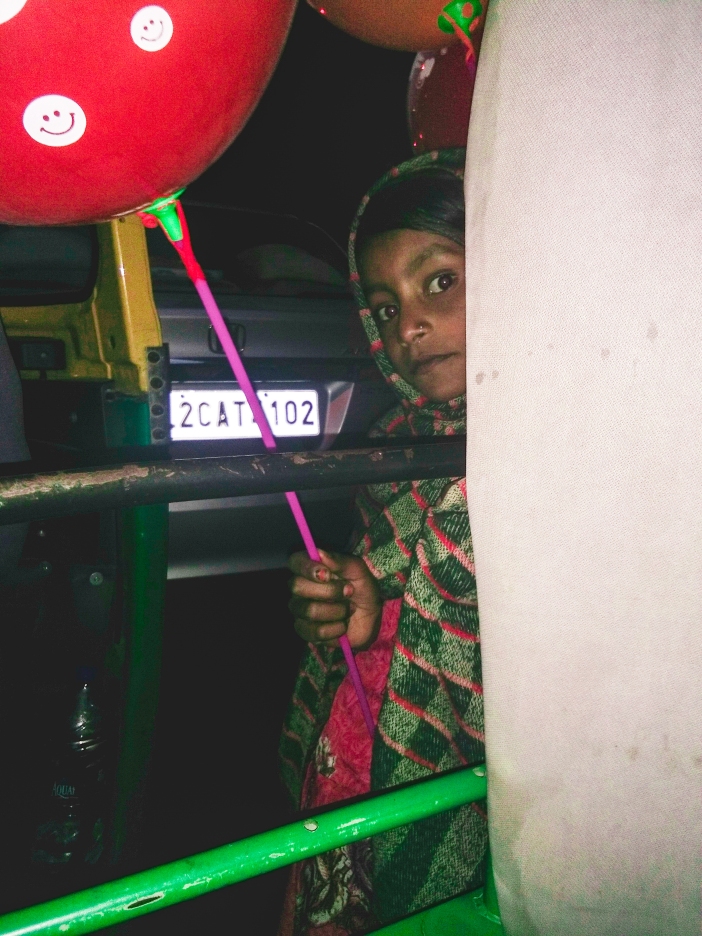
New Delhi:Peeping through the window screens of fancy cars or into auto rickshaws, Nanhi stands firmly rooted to her spot, longing for a glimpse of figures covered in layers of clothing to beat the cold. With her head and upper body wrapped up in a thin blanket on a chilly winter evening, she holds a couple of balloons in her hands, intending to sell them for a petty amount of ten rupees each. It means a fortune to her.
Nanhi is 12 years old and has been selling things like balloons, caps, coconuts, toys, flags etc for as long as she can remember. Living with her family near a Munirka traffic signal, she assists her family’s earnings from dawn to dusk and even after. She has never been to a school and says that she doesn’t want to. Neither does she it blame on her parents for making her work; she claims it’s her will. Whys to the question have only silence to offer. Perhapsshe is hesitant and shy. Maybe, she has been tutored not to say anything that can land her family in trouble.
This is not the story of one Nanhi. It speaks about the dismal state of affairs of millions of child labourers in India, forced into the evils of begging and selling on the traffic signals across the country. Some are doing it under pressure from families, others do it under the threat of ‘owners’, while for some it is the sole way of winning bread for themselves. As per a UNICEF report,18 million children work on the streets of India, of which it is estimated that only 5-20 percent are truly homeless and disconnected from their families. This indicates towards a brutal truth- most of the children on the roads are not deserted. They are brutally abused by traffickers.
The street earning of these kids may vary as per the work but they usually make enough for subsistence. Most street children in India earn between 200 and 830 rupees a month, older ones being the higher earners. The largest chunk of their income goes into feeding their stomach, which costs at a minimum of 10-20 rupees per day. In order to cut down on food expenses,children drink tea to douse hunger.The remaining portion of the income is either sent to the family or spent on entertainment purposes like watching cheap ticket movies or to buy bidis, chewing tobacco, alcohol and drugs.
Street children are often aremade to wear minimal clothing in order to gain sympathy from the public, in hopes of earning a little extra. Portrayal of a disability is another tactice taught to them.They could be forcefully amputated or a body part could be damaged for garnering more pity. Not only do these kids miss out on their rightful opportunity of having a better future, but they get tangled in a world of ill habits, misfortune and poverty.
Nanhi may not know the importance of education in her life right now, but then she is not far away in walking herself up to a doomed state. The thing with child labourers is that their minds are in transition and there is still a hope of them being saved from the atrocities that their parents or owners subject them to. A little push in the right direction is all they need to survive and sustain in order to build a better future.